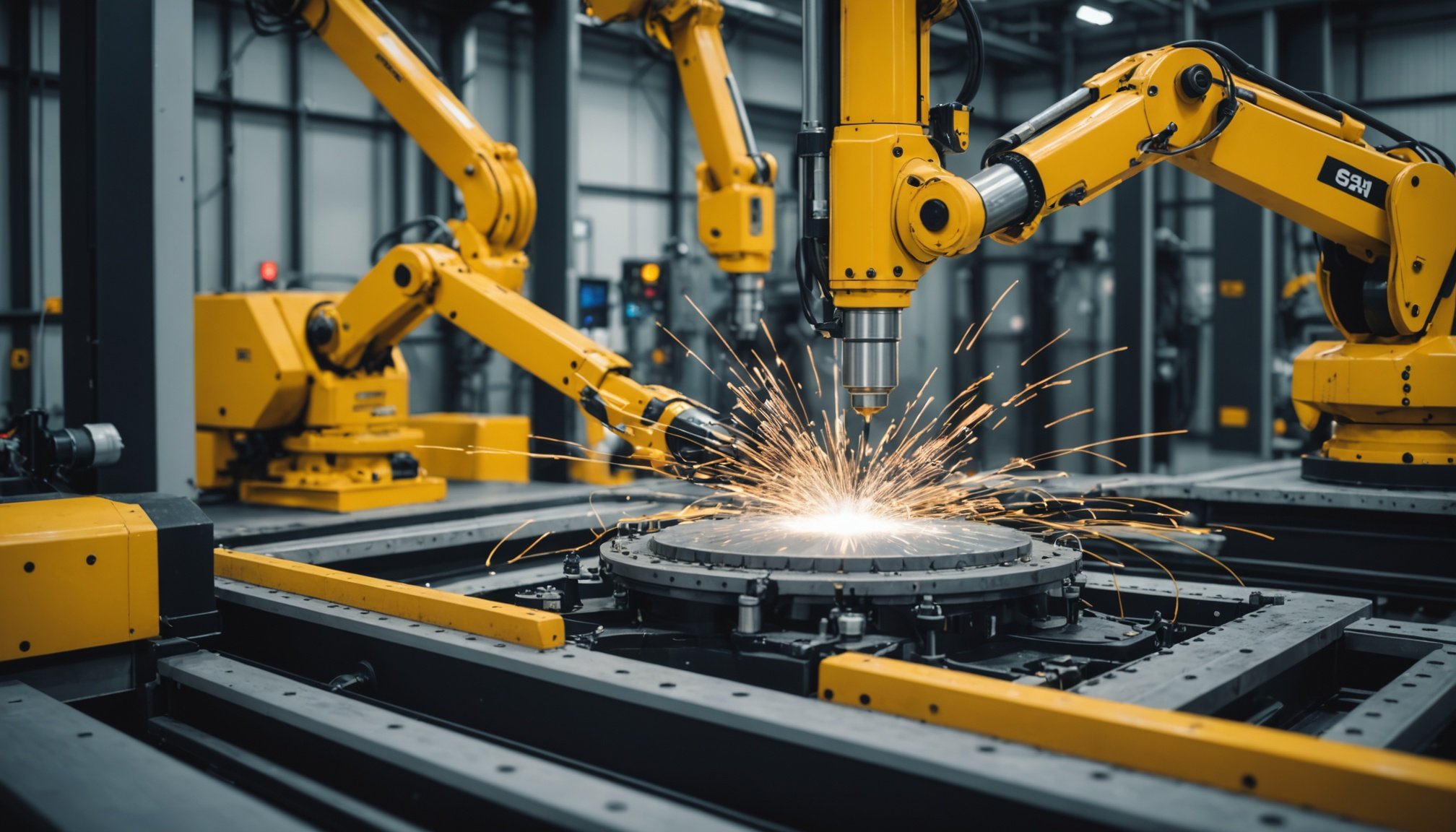Advanced Strategies for Optimizing AI-Driven Predictive Maintenance
The realm of AI-driven predictive maintenance is transformative for industries seeking precision and efficiency. By leveraging advanced performance optimization techniques, companies can significantly enhance equipment reliability and lifespan. At the heart of this transformation are AI technologies capable of predicting failures before they happen, saving both time and resources.
One of the primary benefits of optimizing these processes is the substantial reduction in unplanned downtime. This works in tandem with improved asset management, where operations receive timely alerts, enabling proactive maintenance scheduling.
Additional reading : Effective Strategies for Integrating AI into Environmental Monitoring Systems
Moreover, the integration of IoT and big data analytics into predictive maintenance frameworks further refines this process. Smart manufacturing environments harness data from interconnected devices, feeding complex algorithms that analyze historical and real-time data streams. This analysis helps in pinpointing issues with remarkable accuracy.
- Key advantages:
- Minimizing machine failures
- Enhancing productivity
- Improving decision-making processes
Smart manufacturers employing these strategies also gain a competitive edge, leveraging predictive insights to refine production processes and boost operational efficiencies. As AI continues to evolve, so too will the methodologies and tools used in predictive maintenance, offering ever-increasing benefits to those who adopt them.
Also to read : Unlocking the Secrets to AI Model Training: Effective Strategies for Success in Distributed Environments
Actionable Techniques for Enhancing Operational Efficiency
Exploring methods to amplify operational efficiency in maintenance is crucial for companies aiming to streamline their processes and improve overall outcomes. Utilizing actionable techniques can significantly leverage the potential of modern technological solutions.
Predictive Analytics Implementation
Implementing predictive analytics effectively begins with comprehensive data collection and analysis. Gathering accurate data is vital to identifying key performance indicators (KPIs) that guide decision-making processes. Choosing the right KPIs is crucial, as they provide measurable values to assess progress toward business objectives. Best practices include using these insights to anticipate potential issues, thereby minimizing risks before they escalate into significant problems.
Machine Learning Algorithms
Machine learning algorithms have become instrumental in maintenance, offering predictive capabilities that transform traditional practices. Through carefully chosen case studies, it becomes evident that algorithms can detect patterns and predict failures with remarkable precision. Continuous evaluation and adjustment of these algorithms are necessary to enhance accuracy, ensuring alignment with dynamic operational demands.
Real-Time Monitoring Solutions
Technologies enabling real-time equipment monitoring are pivotal for reducing unexpected downtime and failures. Such solutions provide immediate insights into operational states, allowing for swift action or adjustments as needed. Successful implementations demonstrate dramatic improvements in maintenance response times, fostering a proactive rather than reactive maintenance culture.
Case Studies and Best Practices in Smart Manufacturing
In the landscape of smart manufacturing, there are compelling case studies demonstrating the efficacy of AI-driven solutions. These real-world examples provide valuable insights into achieving successful predictive maintenance.
Companies leading in this field showcase how AI technologies can transform operational workflows. For instance, a major automotive manufacturer integrated big data analytics with traditional maintenance procedures, successfully reducing machine downtime by 30%. Their approach involved using machine sensors to feed continuous data into sophisticated algorithms, revealing inefficiencies before they became problematic.
These implementations highlight the importance of learning from industry-specific applications. Tailored solutions often provide the best results. In the aerospace sector, a pioneer firm utilized predictive insights to adjust maintenance strategies based on real-time monitoring, resulting in a 25% increase in aircraft availability.
When adopting AI strategies, reviewing metrics for success becomes crucial. Key performance indicators such as uptime percentage and maintenance cost reductions are common evaluative measures. These metrics provide a clear understanding of the impact and effectiveness of AI-driven maintenance.
Lessons learned include the necessity of aligning AI tools with business objectives and fostering an organization-wide culture of innovation and adaptation. Markedly, these practices build a structured pathway for other companies wishing to harness the potential of smart manufacturing technologies.
Challenges in Implementing AI-Driven Predictive Maintenance
Addressing the challenges in implementing AI-driven predictive maintenance is crucial for harnessing its full potential. Organizations frequently encounter data quality and integration issues. Inconsistent and incomplete datasets may lead to inaccurate predictions, hampering decision-making processes. Improving data quality requires meticulous data governance strategies, ensuring accuracy and relevance. Integrating diverse data sources harmoniously into a unified system is essential for seamless predictive analysis.
Data Quality and Integration
In smart manufacturing, maintaining high data standards is challenging. Common data challenges include discrepancies and lack of uniformity across systems. Establishing reliable pipelines and standardizing data formats can mitigate these issues. Implementing rigorous validation checks and cleansing processes will further enhance data integrity.
Workforce and Skill Development
Another barrier in predictive maintenance is the workforce skills gap. As AI technologies advance, equipping staff with the necessary skills becomes vital. Training programs aimed at enhancing understanding of AI systems can aid in overcoming this gap. Collaborative approaches, such as partnerships with educational institutions, offer tailored learning experiences.
Fostering a culture of continuous learning and adaptation is equally important. By integrating technology into the core of workforce development, companies can ensure their teams are adept at navigating the evolving landscape of predictive maintenance.
Future Trends and Advancements in Technology
As industries progress, future trends and technological advancements in AI-driven predictive maintenance are poised to reshape how companies approach maintenance. Emerging technologies are at the forefront, enabling businesses to anticipate potential equipment failures with unprecedented accuracy.
Emerging Technologies
Recent innovations highlight the significance of integrating AI with IoT and big data analytics. Enhanced sensor technology and edge computing enable real-time data processing, improving the effectiveness of predictive maintenance systems. These advancements result in more responsive and autonomous maintenance processes.
Predictions for Smart Manufacturing
The future of smart manufacturing is expected to be dominated by AI and automation. As machine learning becomes more sophisticated, systems will offer predictive insights that refine production processes while simultaneously enhancing operational efficiencies. Expect increased adoption of AI, where machines learn and adapt independently.
Impact of Machine Learning and Automation
Machine learning and automation’s potential impact is exponential. Progress in these areas will drive smarter decision-making, minimizing human error and maximizing resource utilization. The predictive maintenance landscape will benefit from innovations that not only extend equipment lifespan but also streamline maintenance schedules, creating a proactive culture. As a result, businesses can expect reduced operational costs and increased productivity.






